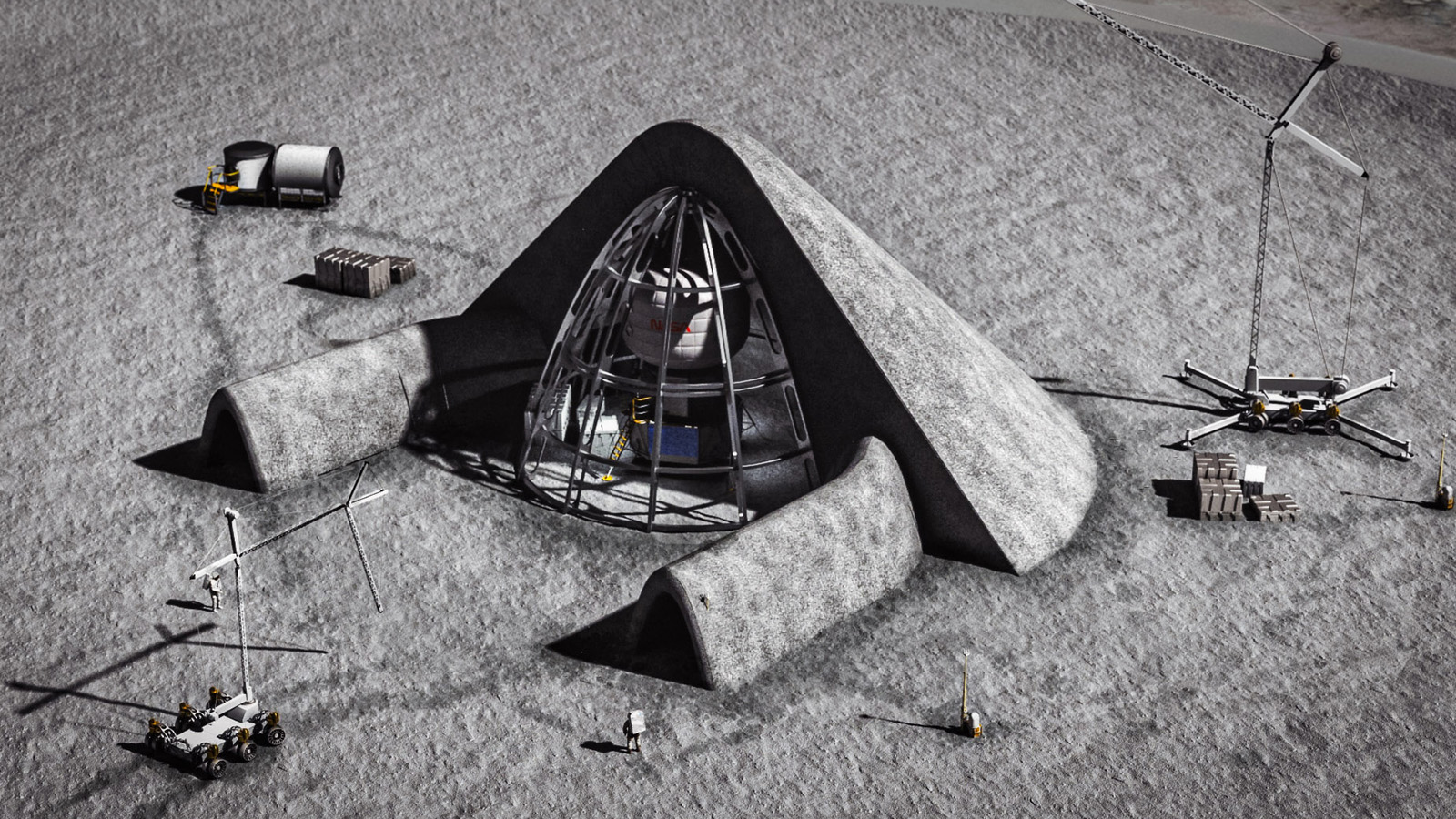Stay Up to Date
Submit your email address to receive the latest industry and Aerospace America news.
The Space Resources Technical Committee advocates affordable, sustainable human space exploration using nonterrestrial natural resources to supply propulsion, power, life-support consumables and manufacturing materials.
Off-Earth resource extraction by human-made machines occurred for the first time in April when the Mars Oxygen In-Situ Resource Utilization Experiment, or MOXIE, extracted 5.37 grams of oxygen via electrolysis of carbon dioxide from the Martian atmosphere. The 17-kilogram, toaster-size payload nested inside NASA’s Perseverance rover changed the paradigm about space exploration. As of the end of October, NASA had completed five of the production experiments planned during one Martian year to validate solid-oxide electrolysis and other technologies at a production rate of up to 10 grams of oxygen per hour. MOXIE achieved several primary objectives, including operation during day and night, during seasonal changes of a quarter of a Martian year and at varied operating temperatures.
In May, the Polar Resources Ice Mining Experiment-1 completed an integrated interfaces critical design review with the lander team. NASA selected Intuitive Machines’ Nova-C in October 2020 as the lunar lander to carry PRIME-1. PRIME-1 is NASA’s first resource-prospecting payload and will go to the connecting ridge of south polar Shackleton crater with the Regolith and Ice Drill for Exploring New Terrains and Mass Spectrometer Observing Lunar Operations instruments.
In September, NASA selected the western ridge of Nobile Crater as the landing site for the Volatiles Investigating Polar Exploration Rover, or VIPER, which is scheduled to fly after PRIME-1 and will carry a copy of PRIME-1’s TRIDENT drill and mass spectrometer along with the Near-Infrared Volatiles Spectrometer System, or NIRVSS and the Neutron Spectrometer System, to explore ice in the permanently shadowed region, or PSR of the moon.
NASA’s Space Technology Mission Directorate awarded a record number of projects to NASA teams, academia and private companies for the development of technologies for space resources exploration and extraction guided by the Lunar Surface Innovation Initiative program. In August, NASA announced promising concepts from Florida-based Redwire, the Colorado School of Mines and Colorado-based Austere Engineering as the winners of NASA’s Break the Ice Lunar Challenge Phase 1 among 31 teams representing the U.S., Canada, Australia and Sri Lanka. Ten runner-up teams also received awards. Phase 1 challenged teams to design a system architecture for excavating and transporting large amounts of icy regolith and water from a PSR near the moon’s south pole.
In the field of construction technologies using in-situ resources, materials and concept testing has moved to a larger scale. In December 2020 and March, NASA’s Swamp Works at Kennedy Space Center in Florida and California-based Masten Space Systems completed landing-launch pad materials exposure tests to a methane-oxygen rocket engine under conditions approximating that of large lunar landers. In January, NASA selected seven university teams to address dust mitigation technologies in the 2021 Big Idea challenge, including a Colorado School of Mines team that completed landing-launch pad materials testing at Masten Space Systems in September.
Also in September, NASA’s Langley Research Center in Virginia completed the multicenter Lunar Safe Haven concept study for creating a shelter using lunar regolith resources and autonomous robotics to protect crew members against radiation and meteoroids.
In March, Michigan Technological University inaugurated the Planetary Surface Technology Development Lab as one of the largest nongovernment versatile test facilities for space resources technology testing under lunar surface conditions, including dust, vacuum and temperatures. NASA announced in January that the laboratory won the 2020 NASA Big Idea challenge with its vehicle that can travel down 45-degree slopes while deploying a superconducting power and communication tether to explore resources in permanently shadowed craters. The lab tested the vehicle repeatedly early this year on 30-degree to 45-degree slopes in the lunar regolith test box while deploying the tether with only 1 newton of tension.
Contributors: Michael Hecht, Julie Kleinhenz, Diane Linne, Robert Moses, Paul van Susante and Naveen Vetcha
Stay Up to Date
Submit your email address to receive the latest industry and Aerospace America news.




